Mad Hedge Technology Letter
May 10, 2024
Fiat Lux
Featured Trade:
(CHINESE TARIFFS AT THE FOREFRONT)
(EV)

Mad Hedge Technology Letter
May 10, 2024
Fiat Lux
Featured Trade:
(CHINESE TARIFFS AT THE FOREFRONT)
(EV)

Tariffs on Chinese EVs skyrocketing by 400% are just another example of the federal government getting in the way once again as the current administration limps to the November starting line.
These levies are directed at everything central to producing EVs like the battery and the car itself.
I understand that the point is to protect EV companies at home, but tariffs don’t work and in almost every case, the end price to consumers rises painfully.
It’s not any better over the Atlantic so this frees us China to innovate and get ahead with government support.
The Chinese are playing the long game.
This review of Chinese tariffs was triggered by the administration before it, and it just smacks of inefficiency to me. It only took 4 years to finish the review as infighting took hold and the glacial pace finally ended with a decision.
In fact, Biden's $7.5 billion investment in EV charging has only produced 7 stations in two years, per Washington Post.
Where did the rest of the money go?
My guess is carrying out a raft of economic surveys isn’t cheap when there are no guard rails in price setting.
Maybe the thousands of consultants giving their 2 cents to keep that bureaucratic machine humming in Washington made a dent with another few billion invoices.
I’ll at least give it to the White House that they were able to produce 7 and not 1 or 2.
A billion dollars per EV charger is not good enough in 2024 while the Chinese forge ahead with their technological prowess.
The Chinese tariff rate on electric vehicles is expected to quadruple from roughly 25% to 100% plus an additional 2.5% duty would apply to all automobiles imported into the US.
The EU launched an EV subsidy investigation in October that may lead to additional tariffs by July as well.
The tariffs would likely have little immediate impact on Chinese firms since its world-beating EV manufacturers have steered clear of the US market due to tariffs.
Its solar companies mostly export to the US from third countries to avoid curbs, with US firms seeking higher tariffs on that trade, too.
The move comes after Biden last month proposed new 25% tariffs on Chinese steel and aluminum.
Protecting the American EV sub-sector feels like a situation in which China is outcompeting American EV companies and the government is directly reacting to that in an emotional way.
My guess is that it won’t work.
China will be able to circumnavigate these tariffs easily. It’s impossible to put the genie back in the bottle once it is out.
The only way American EVs will find a solution is to innovate itself away from the competition and that will be tough with the level of interruption by the Federal government.
Sooner or later, these better-made Chinese cars will find themselves in Europe and America on a grand scale.
If the government would get out of the way, tech companies would be forced to innovate or die.
A main strategy of stopping the Chinese from selling to you is a wack-a-mole strategy and the products will eventually arrive,
I am strongly bearish the American EV sub-sector at this point.
This is another tech sub-sector that has turned stale, similar to the streaming sub-sector where I just took profits in a bearish Roku trade.
Why doesn’t the admin go after the Chinese unrealized profits while they’re conjuring up some more tariffs? I wouldn’t put it past them.
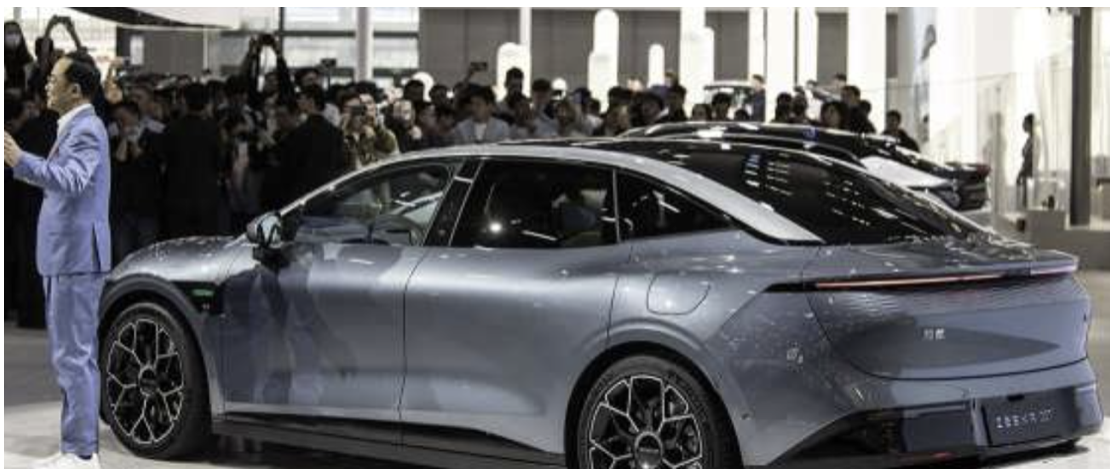

Mad Hedge Technology Letter
November 1, 2023
Fiat Lux
Featured Trade:
(BYD IS HERE TO STAY)
(BYDDY), (TSLA), (EV)

Tesla’s (TSLA) recent underperformance is a canary in the coal mine of what could become of the global EV industry.
EV makers better watch out because the race to zero is coming for all of them.
It could be yet another tech industry captured by the Chinese. The Chinese are quickly rising up the food chain of technological capabilities and these new developments are sure to rattle the White House.
I remember years ago when the Chinese tried their best at smartphones, they were terrible, but fast forward to today, and now they compare close to the iPhone with much better pricing.
Now, the Chinese are coming after electric cars and I also remember touring EVs in China in 2007 and they again were pretty terrible.
However, fast forward to today, and yet again they have achieved major inroads in terms of quality and reach. BYD Company Limited (BYDDY) even produces something comparable to Tesla which is no small feat.
Tesla’s disappointing third-quarter deliveries highlight the panic state side where the first mover advantage has served CEO Elon Musk well but eroded lately.
Tesla sold 435,000 electric cars last quarter, while BYD sold 431,000 battery-powered electric cars over the same period.
Expect BYD to surge past Tesla in delivered electric cars soon because they have access to a vastly bigger market while the Chinese communist party is doing everything to ruin American corporate business in the Middle Kingdom.
BYD is already far ahead when it comes to total sales. Including hybrids, BYD sold over 800,000 cars last quarter, almost twice as much as Tesla.
The Chinese company sold 1.8 million cars last year, over 911,000 of which were BEVs. Tesla, which only sells BEVs, sold 1.3 million cars.
Musk had previously warned that planned upgrades to manufacturing plants around the world may lead to lower deliveries for the rest of the year.
Tesla is also facing sluggish demand, forcing it to launch aggressive price wars in both China and the U.S.
BYD has surged ahead of its competitors in China by selling more affordable electric vehicles, unlike the premium models sold by Tesla and other EV companies like Nio and XPeng. BYD recently unseated Volkswagen as China’s top-selling car brand.
The company is expanding outside of China and is now the top-selling EV brand in markets like Thailand, Israel, and Singapore. It’s even expanding into more developed markets like Japan and Europe.
Watch out for China’s BYD to hijack Western markets moving forward including Europe, Canada, the United States, and the UK.
It’s finally time to stop ignoring that China does a good job producing EVs and other hard-to-manufacture technology.
My guess is that China will also surpass the United States in semiconductor chip technology, although that will take longer to achieve.
The Pentagon has sounded the alarm bells after noticing huge improvements in chip know-how by the Chinese.
Competition is finally here for Musk after so many years of taking a free ride in the US and it’s about time. Now the rubber finally meets the road.
Readers with a high threshold of risk tolerance should look at BYD’s ADR (BYD) if shares experience a big dip then allocating a small portion of a portfolio to this equity makes sense.
Don’t forget there is now a high probability of Tesla losing its Shanghai factory in China once China seizes American businesses on the mainland. It doesn’t matter how much Musk kowtows to the communist party because this issue is far bigger than him or the EV business.
That threat has gone from almost 0 just recently to becoming somewhat plausible although still quite low. The tech world is accelerating at warp speed in 2023.
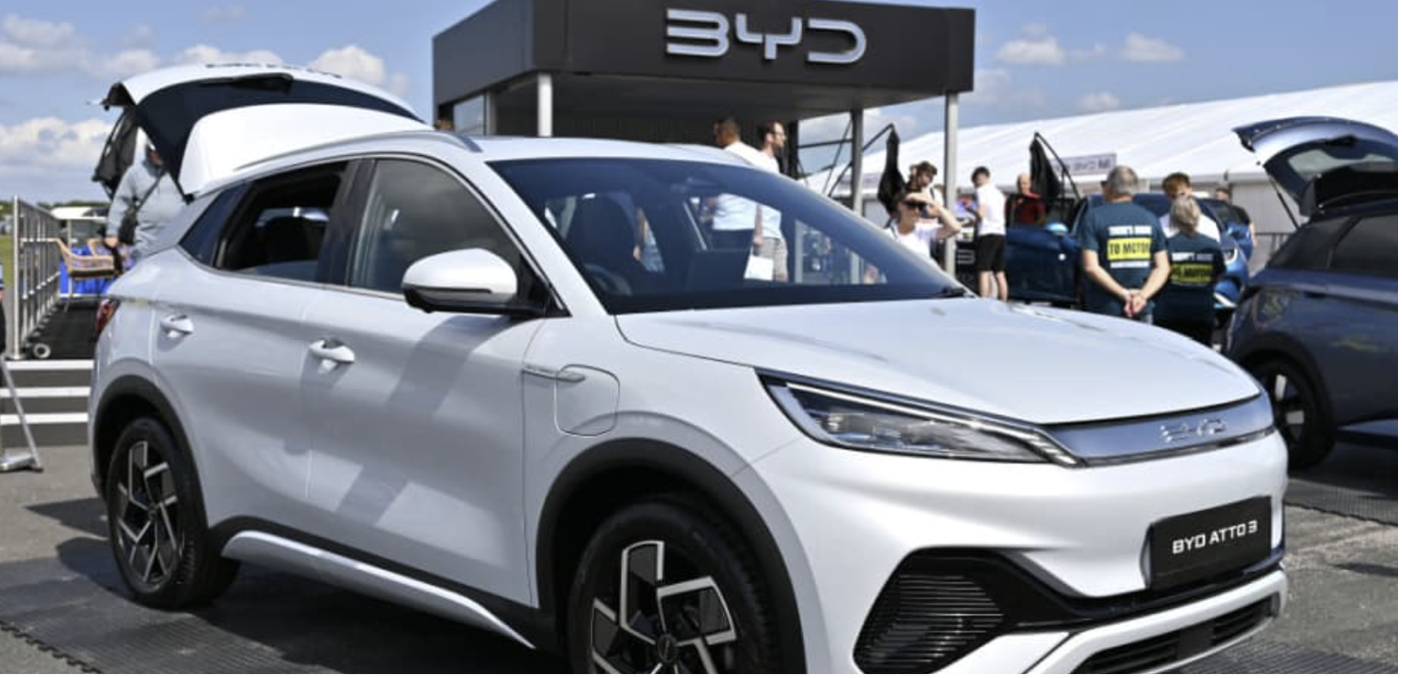
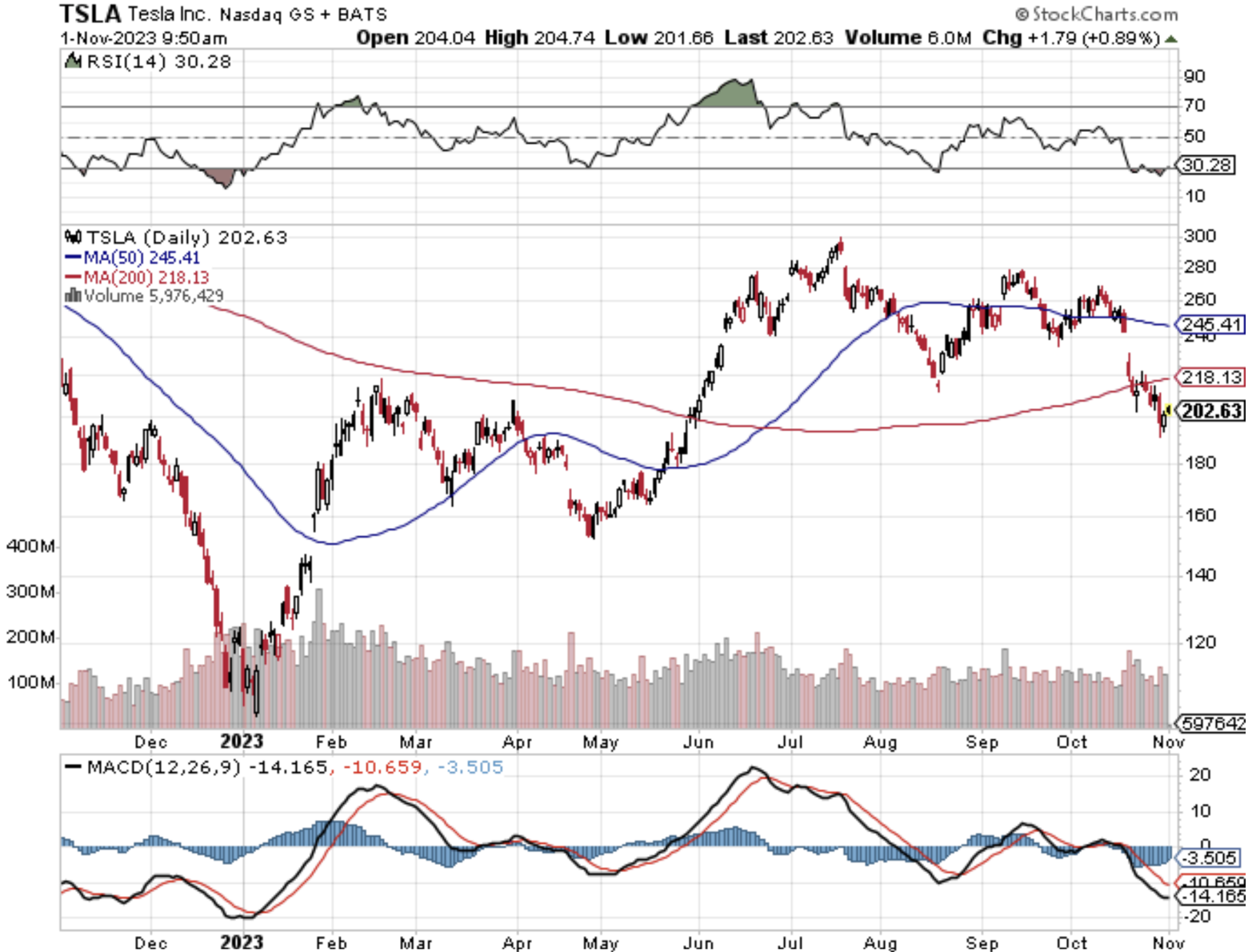
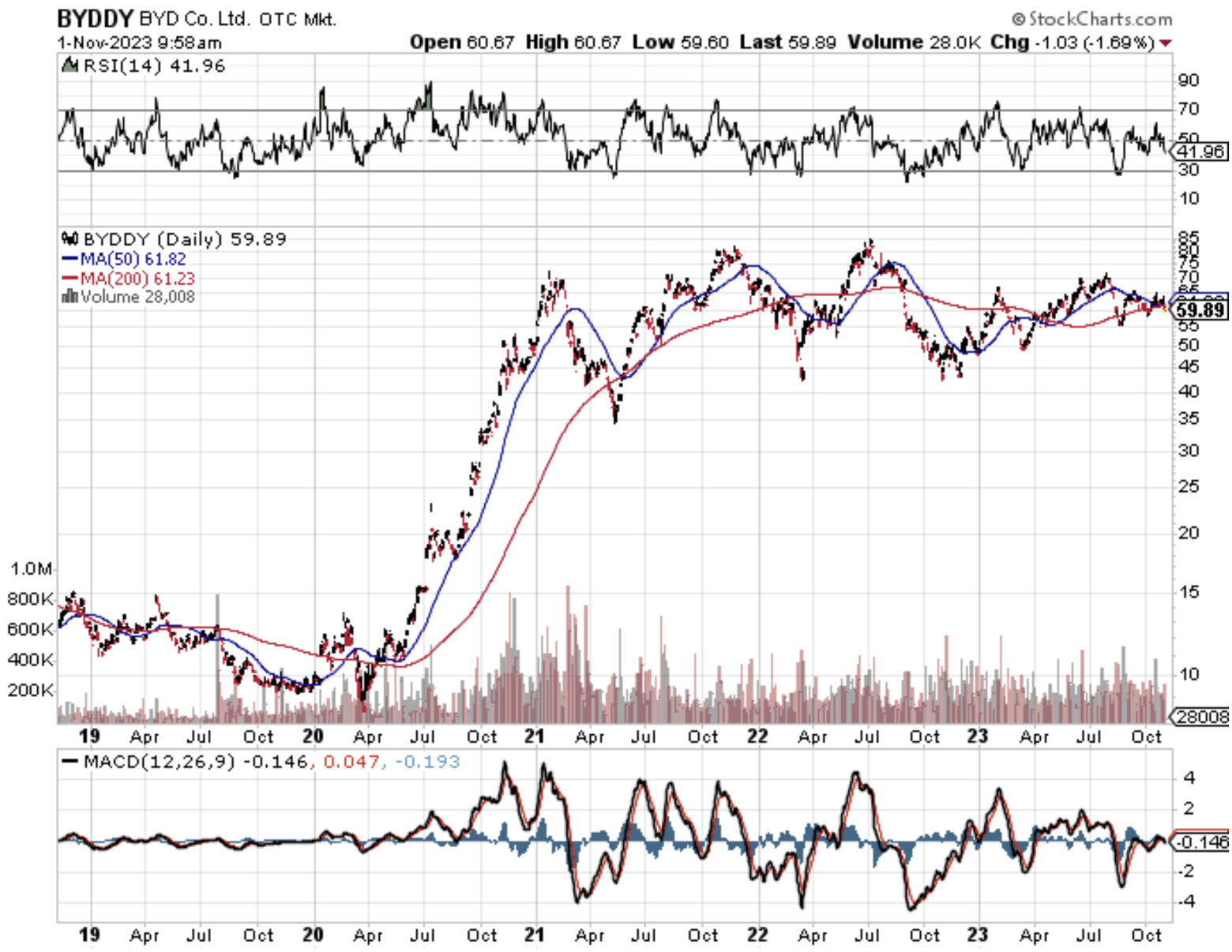
Mad Hedge Technology Letter
October 9, 2023
Fiat Lux
Featured Trade:
(GLOBAL WAR THREATENS TECH RALLY)
(GOOGL), (MSFT), (LMT), (EV), (CHINA)

Hot wars play a central role in accelerating inflation and the world’s newest kinetic war in the Middle East could prove toxic to the Fed’s quest to quell high inflation.
First, condolences to the atrocities that have occurred in the past 72 hours, the damage to families, society, and communities are hurtful and long-lasting.
Conflict in the Middle East means higher energy prices because a higher risk premium will be attached to the cost of logistics and production.
The Middle East has some of the highest outputs of oil and natural gas in the world with supply from Qatar, Saudi Arabia, and Iran flooding the world with cheap energy.
What does that mean for technology stocks?
I can tell you nothing good.
Physical wars rotate demand to certain goods that will deliver the consumer the best outcomes and in this case food and shelter. Running a supermarket during the lockdowns was a small gold mine. That means there is a high chance that money rotates out of Google and Microsoft and goes into defense and military stocks like Raytheon and Lockheed Martin (LMT).
Unless products are critical to survival, goods like EVs and Tesla’s (TSLA) are placed on the backburner.
Few will have the money to charge their EVs with another wave of price increases coming down the pipeline. I already hear Norwegians complaining about the cost of fueling EVs after cheap Russian energy was shut off to them.
Forget about an iPhone upgrade cycle.
Kids will just have to deal with the iPhone 14 for longer.
High inflation plays a leading role in wars and conflicts. But that doesn’t mean that economic policy doesn’t matter anymore. Less wars result in bigger tailwinds to deflation.
China also owns the rare metals industry and policy might dictate to hold back supply and earmark it for national and military industries instead of selling to foreigners.
Tesla’s might not be able to be produced anymore because they can’t secure the right materials like cobalt from China.
If a full-fledged regional war intensifies, then the US economy is almost guaranteed to lock in 4% as the new CPI low for this inflationary cycle. The next move would be higher.
The US has already pledge financial and military aid to Israel and that bill will be footed by the US taxpayer.
If this war begins to get expensive and the US starts shipping off $200 billion every few months to the Middle East then this fiscal spending will bring forward more inflation.
Ultimately, if a third war in the shape of Taiwan rears its ugly head, we could experience high 20% inflation like we did in the 1970’s, but this time around, we would do it with close to $34 trillion in US federal debt and those onerous debt interest payments.
The technology sector better hope and pray for a quick resolution to the Middle East conflict in order to stave off the threat of destroying the Santa Claus rally in the Nasdaq.
A third concurrent war in Taiwan would mean instant recession, spiking bond yields, $150 per barrel oil, and technology stocks experiencing a wild pullback.
In the meantime, the newest stresses will guarantee the Eurozone plus UK into a deep recession because they aren’t self-sufficient.
It also adds even more stress to the US economy which is the last man standing at this point because US tech earnings are still in the green.
Certain stocks do very well in times of geopolitics, but these multinational globalized companies have a lot to sacrifice if the world goes pear-shaped.
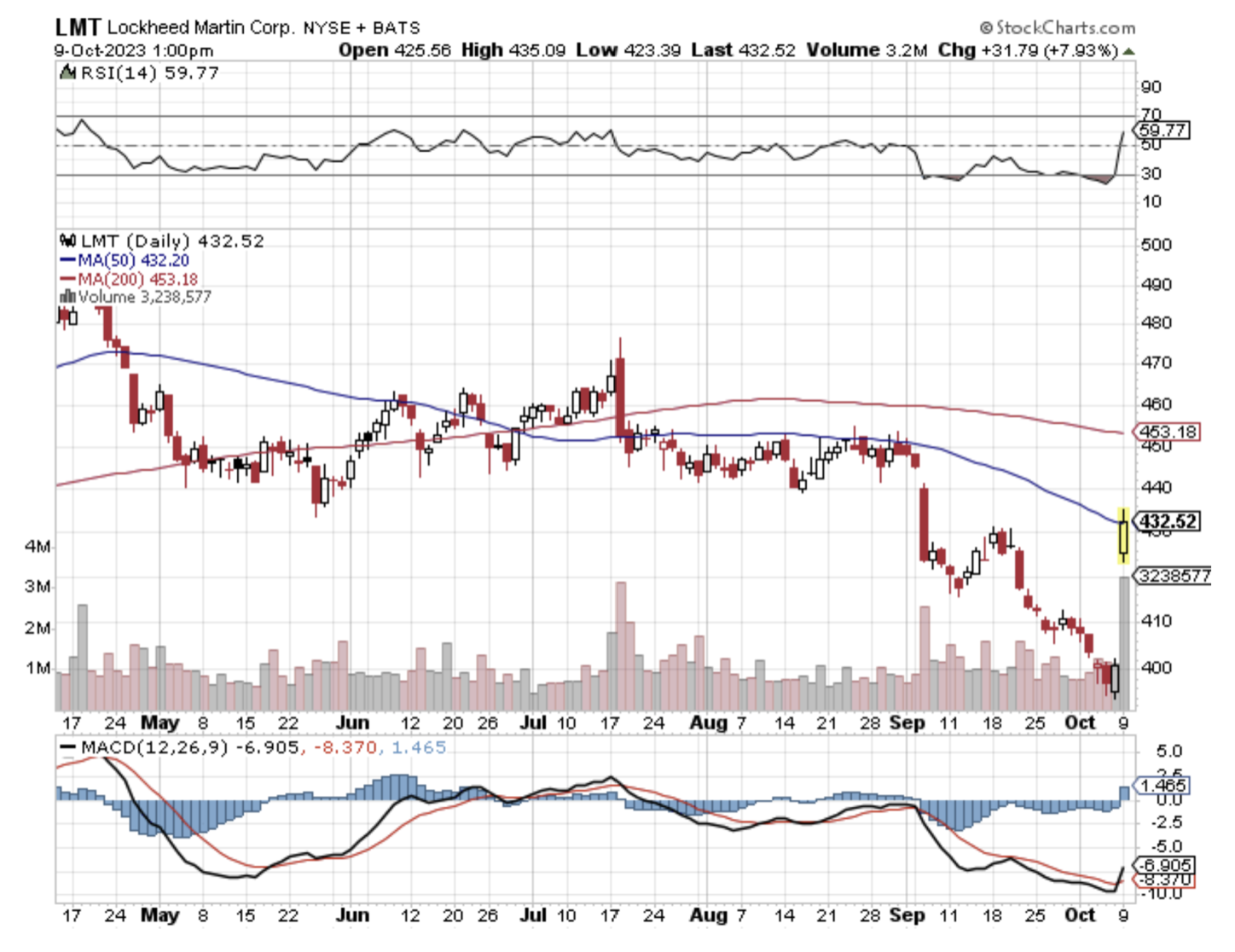
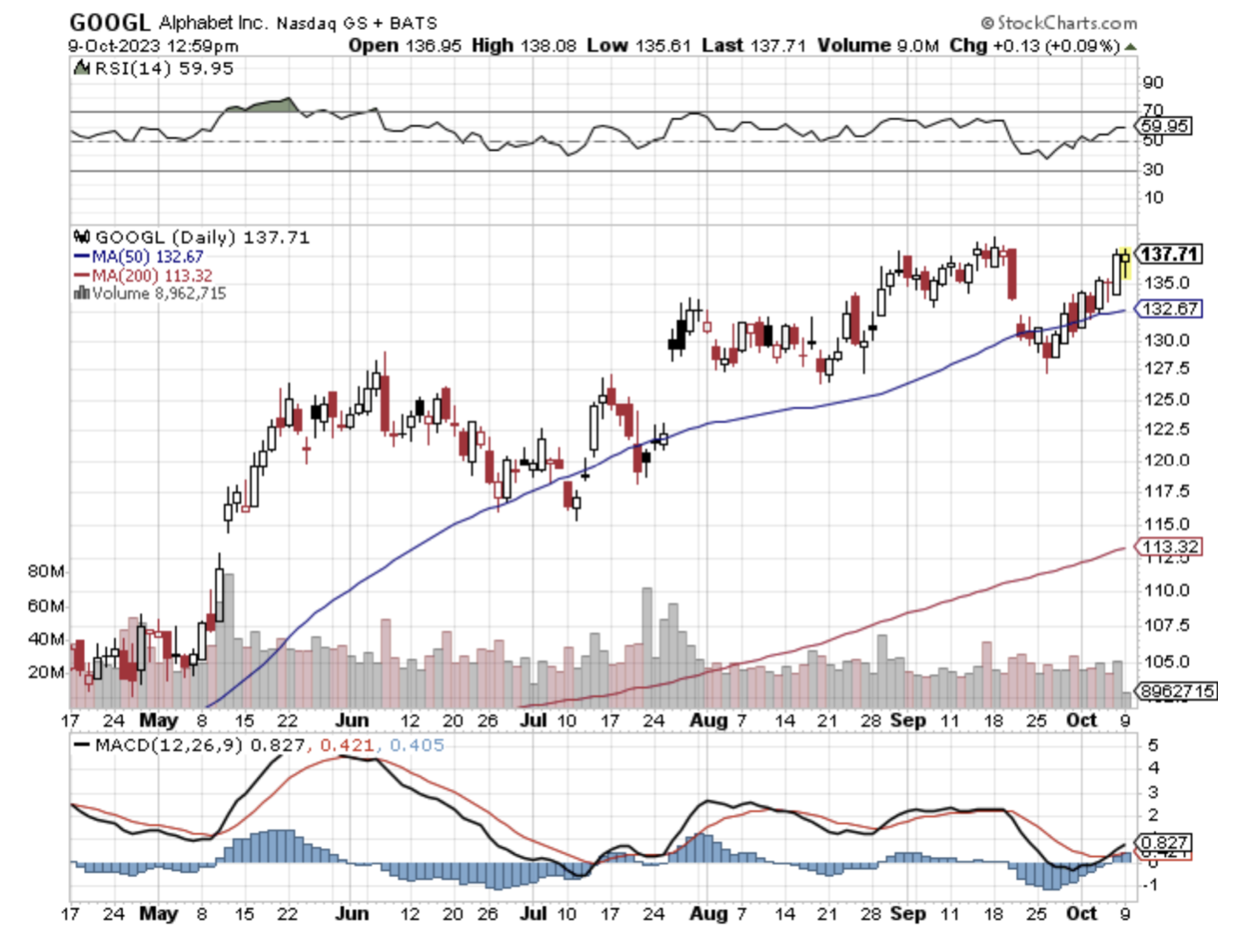
Mad Hedge Technology Letter
October 6, 2023
Fiat Lux
Featured Trade:
(TESLA GAINS UPPER HAND WITH HELP FROM CHINA)
(TSLA), (LCID), (RIVN), (EV), (CHINA)

The American consumer has been battered.
Declining iPhone sales says it all, but that is nothing compared to the Chinese consumer who are drowning in a cesspool of their own debt.
The Chinese economy is threatening to become the new Japanese economy which is infamous for its run of lost decade after lost decade.
Who cares?
I don’t, but lithium prices do and that’s why we need to focus on as the lust for EVs in the western world picks up pace.
The Chinese have cornered the lithium market and supply has expanded.
This should allow EV makers like Elon Musk to lower the price of Tesla’s further effectively winning the price war. The inverse of Bidenomics sometimes happens, but usually takes the Chinese to flood the market with extra product and in this case lithium.
Every small EV stock should be ignored. There is Tesla and nobody else.
Lithium prices are crashing around the world.
After a buying frenzy sent global prices soaring though last year, they’ve since plunged as electric vehicle demand crashes and supplies are expected to remain strong.
The weakness has been especially pronounced there as battery makers tap stockpiles built up during the boom, while demand concerns are being exacerbated by wider fears about the country’s economy.
Chinese sentiment is being hurt by weak consumer and business confidence and an ongoing property crisis.
The nation’s EV sales growth slowed to 37% in the second quarter from a year earlier, versus a global average of 50%.
That’s helped push most-active Chinese lithium carbonate futures down about 37% since they started trading in July. They’re at a level that works out to a roughly 35% discount to lithium hydroxide futures in the US, according to traders.
The price decline has further to go. Lithium carbonate and hydroxide could drop another 30% in the near term on the back of weaker demand, high inventories and improved supply.
Tesla can lower the price of EVs as it seeks to capitalize on US consumer’s lack of discretionary budget as inflation takes a bite out of their daily budgets.
Today, the carmaker marked down the starting price of the base Model 3 by $1,250 to $38,990.
Tesla also lopped $2,250 off the price of the performance version of the Model 3, which now starts at $50,990, and $2,000 off the long-range and performance versions of the Model Y sport utility vehicle, which now cost $48,490 and $52,490, respectively.
The biggest factor contributing to Tesla’s price cuts has been the lifting of production constraints that held the company back for years.
Tesla still maintains a dominant position in the US electric-vehicle market, though it’s increasingly relied on discounting to preserve its position. Fresh product could help buoy pricing in the coming months, with the carmaker recently debuting an updated version of the Model 3.
Tesla has already identified the race to the bottom for the price of EVs and this should crush the rest of the competition as EVs turn from luxury goods to commodities.
Just take a look at rivals like Rivian (RIVN) who lose $33,000 for each vehicle they sell. EV maker Lucid’s $338,000 loss per car Is turning investors off
I wouldn’t put a cent into any other EV stock aside from Tesla.
They will be the future iPad on wheels that Steve Jobs dreamed about and now they can lower prices even more aggressively now that the price of lithium has crashed.
Musk was smart to start the price war earlier to crush competition.
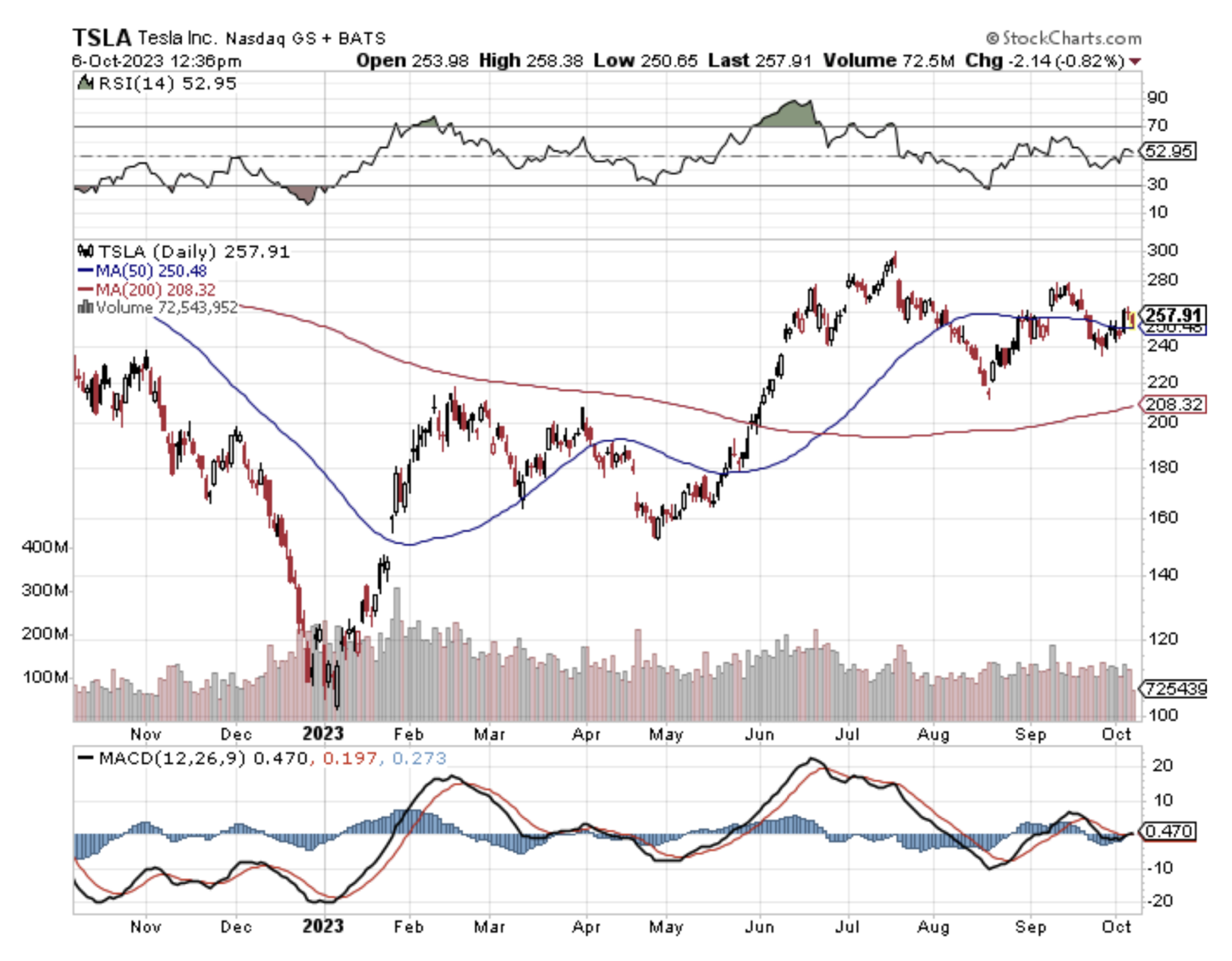
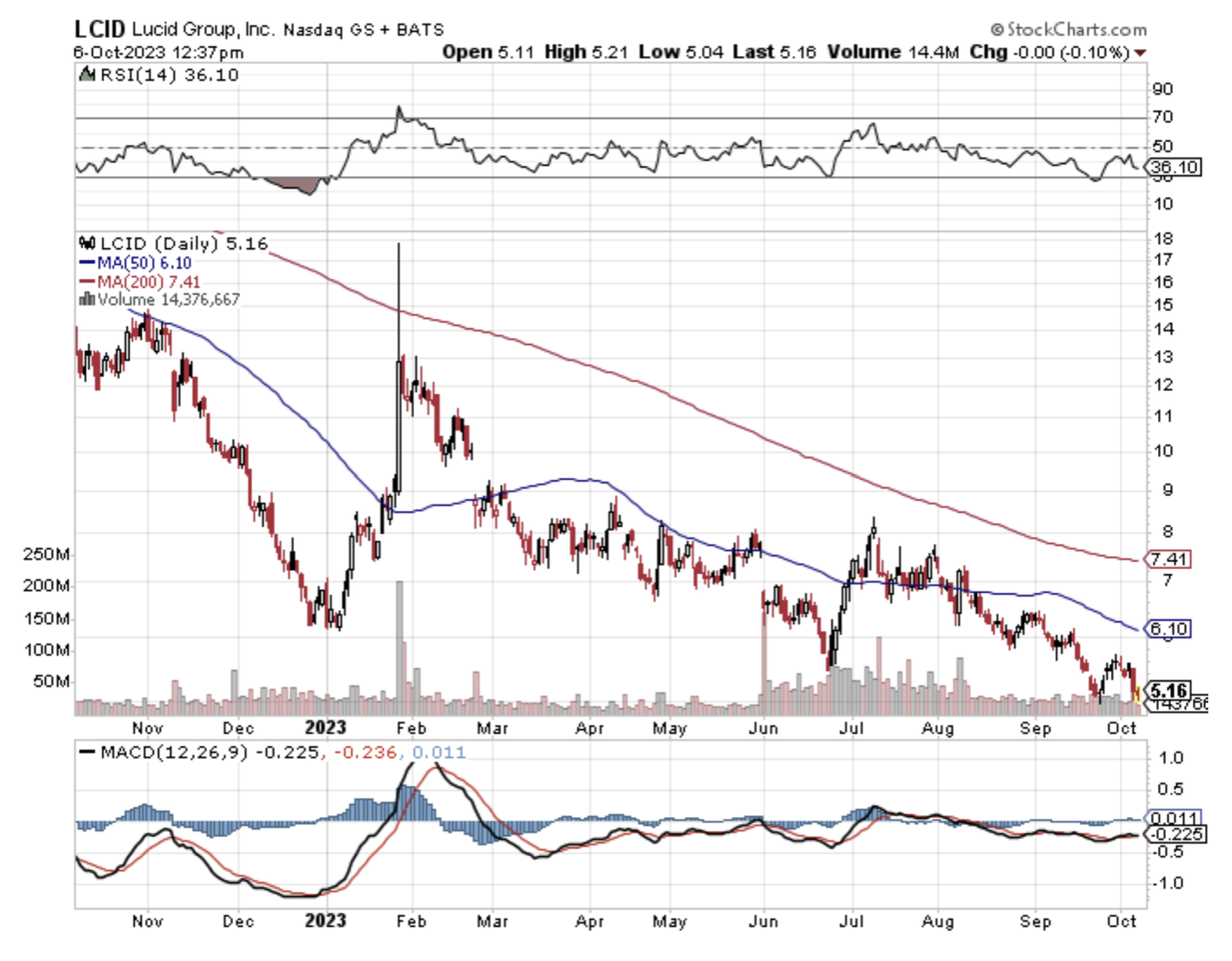
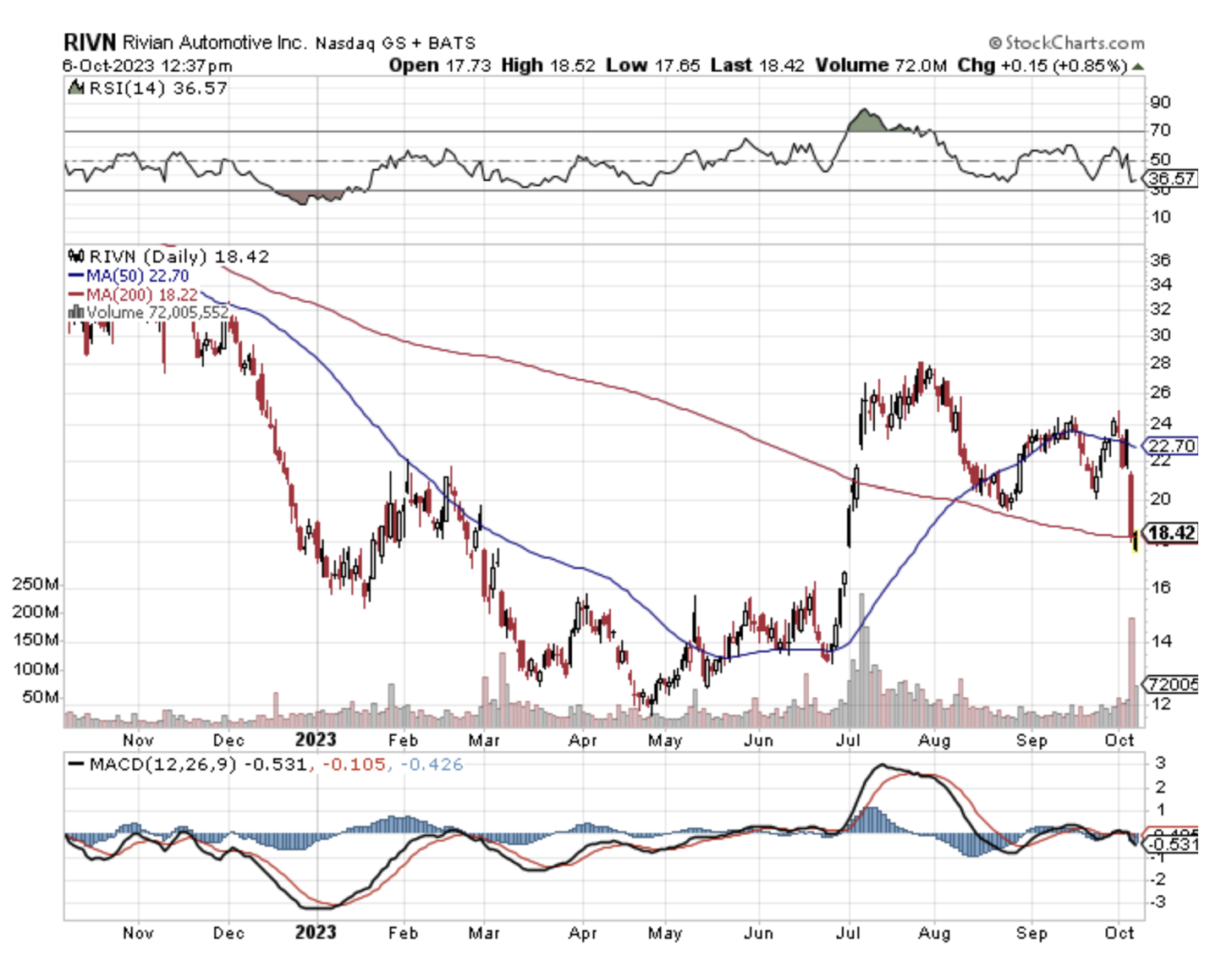
Global Market Comments
October 12, 2021
Fiat Lux
Featured Trade:
(ON THE AIR WITH CASEY STUBBS),
(HOW TO HANDLE THE FRIDAY, OCTOBER 15 OPTIONS EXPIRATION),
(SPY), (GS), (MS), HPM), (BAC), (BLK),
(UNP), (TLT), (C), (BAC), (BRKB)

Inflation is everywhere — at your grocer, coffee shop and the bad news is — it’s likely to stay transitory for quite a while as it transits into even higher prices.
This isn’t the Mad Hedge Agricultural Letter so I will stay in my lane — this letter is about one of the building blocks of technology and specifically Electric Vehicles (EVs) — Lithium Batteries.
Lithium-ion batteries are the most popular type of batteries used in electric cars.
This kind of battery may sound familiar — these batteries are also used in most portable electronics, including cell phones and computers. Lithium-ion batteries have a high power-to-weight ratio, high energy efficiency and good high-temperature performance.
In practice, this means that the batteries hold a lot of energy for their weight, which is vital for electric cars — less weight means the car can travel further on a single charge.
The cost of Lithium-ion batteries is critical to EVs because it comprises about 50% of the total cost of producing an EV.
So what’s the deal with Lithium-ion batteries?
Prices have more than doubled in the past year because demand for the materials used in electric cars and renewable-energy storage has gone bonkers.
Miners cannot issue the supply to satisfy the current demand.
Instead of getting more into the weeds — I will tell you that your new Tesla (TSLA) you’re about to buy will become more expensive, so start budgeting wisely!
Increased costs will be passed onto electric vehicle (EV) manufacturers and not necessarily battery cell manufacturers, thereby potentially leading to a cost increase in EVs in the near future.
The price inflation from lithium is actually derailing a decades-long trend of a fall in lithium-ion battery prices.
Then coupled with a persisting semiconductor shortage (impacting microchip availability) — supply shortages could lead to EV demand destruction as EVs simply fail to come to market in significant quantities or do so at higher prices in limited availability.
Demand destruction is highly likely to accelerate if new lithium projects do not come to market relatively quickly, or miners might simply choose to collude together to keep prices high.
On the supply side, it’s just not guaranteed that miners can keep their costs of exploration, mining, engineering, and executing as low as they did before.
Hiring the proper talent to execute a new mine is facing headwinds like many other businesses in terms of spiking salary costs and lack of engineering talent.
For the EV industry, price points are a sore point because many consumers are on the fence about whether to buy an EV or not.
Simply put, if EVs are too expensive, consumers will just go with a gas guzzler because that’s what they know and they don’t need to deal with waiting hours at a charging station to charge their EV with a gas station across the street.
It’s true that the quality of EVs from Tesla to Mercedes has improved leaps and bounds in the past few years so the quality issue is a non-issue today.
To have a circular and sustainable bull market, EV uptake would need to surpass 50%. Until then, it’s a war of price points.
There’s also a strong possibility that not enough lithium can be mined, and this will keep EV prices high.
Battery makers are also facing higher prices for other key inputs like cobalt and copper.
Instead of doing risky things like short Tesla, which is a dangerous strategy, I would buy a lithium ETF.
The one I recommend is Global X Lithium & Battery Tech ETF (LIT).
The stock is up over 300% in the last 2 years and if this lithium inflation narrative persists, which I highly believe it will, then any substantial drawdowns should be bought.
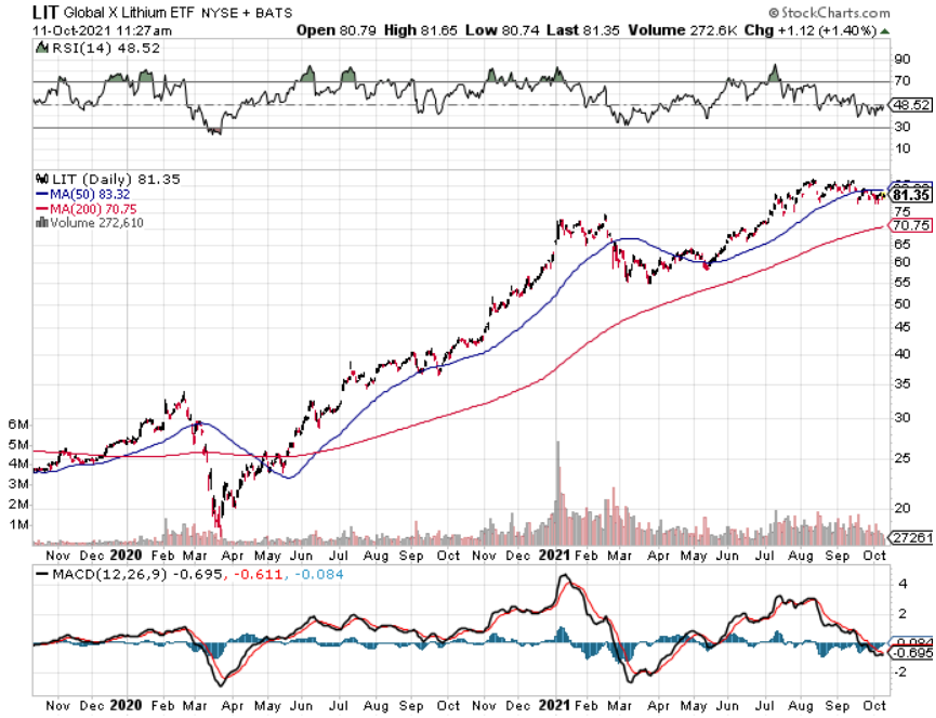

Legal Disclaimer
There is a very high degree of risk involved in trading. Past results are not indicative of future returns. MadHedgeFundTrader.com and all individuals affiliated with this site assume no responsibilities for your trading and investment results. The indicators, strategies, columns, articles and all other features are for educational purposes only and should not be construed as investment advice. Information for futures trading observations are obtained from sources believed to be reliable, but we do not warrant its completeness or accuracy, or warrant any results from the use of the information. Your use of the trading observations is entirely at your own risk and it is your sole responsibility to evaluate the accuracy, completeness and usefulness of the information. You must assess the risk of any trade with your broker and make your own independent decisions regarding any securities mentioned herein. Affiliates of MadHedgeFundTrader.com may have a position or effect transactions in the securities described herein (or options thereon) and/or otherwise employ trading strategies that may be consistent or inconsistent with the provided strategies.
This site uses cookies. By continuing to browse the site, you are agreeing to our use of cookies.
OKLearn moreWe may request cookies to be set on your device. We use cookies to let us know when you visit our websites, how you interact with us, to enrich your user experience, and to customize your relationship with our website.
Click on the different category headings to find out more. You can also change some of your preferences. Note that blocking some types of cookies may impact your experience on our websites and the services we are able to offer.
These cookies are strictly necessary to provide you with services available through our website and to use some of its features.
Because these cookies are strictly necessary to deliver the website, refuseing them will have impact how our site functions. You always can block or delete cookies by changing your browser settings and force blocking all cookies on this website. But this will always prompt you to accept/refuse cookies when revisiting our site.
We fully respect if you want to refuse cookies but to avoid asking you again and again kindly allow us to store a cookie for that. You are free to opt out any time or opt in for other cookies to get a better experience. If you refuse cookies we will remove all set cookies in our domain.
We provide you with a list of stored cookies on your computer in our domain so you can check what we stored. Due to security reasons we are not able to show or modify cookies from other domains. You can check these in your browser security settings.
These cookies collect information that is used either in aggregate form to help us understand how our website is being used or how effective our marketing campaigns are, or to help us customize our website and application for you in order to enhance your experience.
If you do not want that we track your visist to our site you can disable tracking in your browser here:
We also use different external services like Google Webfonts, Google Maps, and external Video providers. Since these providers may collect personal data like your IP address we allow you to block them here. Please be aware that this might heavily reduce the functionality and appearance of our site. Changes will take effect once you reload the page.
Google Webfont Settings:
Google Map Settings:
Vimeo and Youtube video embeds:
